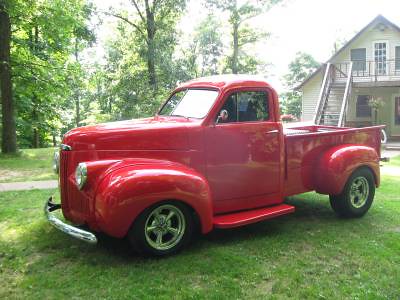Someone recently mentioned on another thread here, how the Stude six is often bashed, and was speaking in reference to a 65/66 motor, IIRC.
When it comes to comparing the "McKinnon Industries" 65/66 to 64 & earlier sixes by Stude, there really is NO comparison. The 65/66, in both the 194 and 230 CID versions, is basically bullet proof, and has plenty of power for a Studebaker. The Stude six OTOH, was quite anemic and problematic, mechanically. Again, NO comparison IMHO.
I say IMHO, because I am aware there are plenty of others who are very fond of the earlier sixes, and will insist they are great little motors. But I doubt many of us would argue against the merits of the 65/66 motors. A kajillion miles on misc GM vehicles (and 65/66 Studes) who used them can't be wrong
When it comes to comparing the "McKinnon Industries" 65/66 to 64 & earlier sixes by Stude, there really is NO comparison. The 65/66, in both the 194 and 230 CID versions, is basically bullet proof, and has plenty of power for a Studebaker. The Stude six OTOH, was quite anemic and problematic, mechanically. Again, NO comparison IMHO.
I say IMHO, because I am aware there are plenty of others who are very fond of the earlier sixes, and will insist they are great little motors. But I doubt many of us would argue against the merits of the 65/66 motors. A kajillion miles on misc GM vehicles (and 65/66 Studes) who used them can't be wrong


 BP
BP
 We've got to quit saying,
We've got to quit saying, 



 that the later GM in line six would trump all of the Stude. Sixes for performance, but just ask forum member Doug Hughes about FUEL Economy! They are terrible!
that the later GM in line six would trump all of the Stude. Sixes for performance, but just ask forum member Doug Hughes about FUEL Economy! They are terrible!
Comment